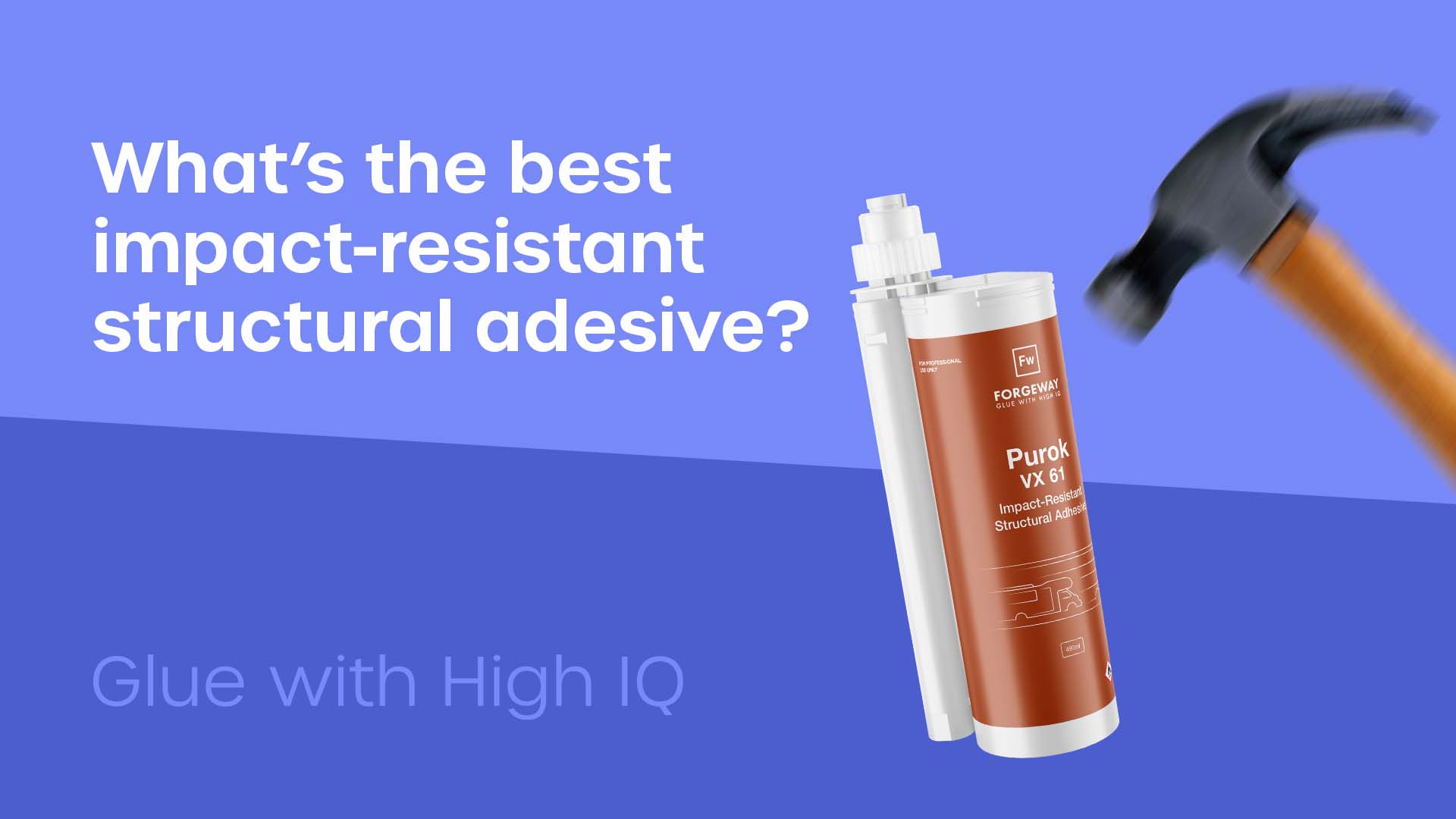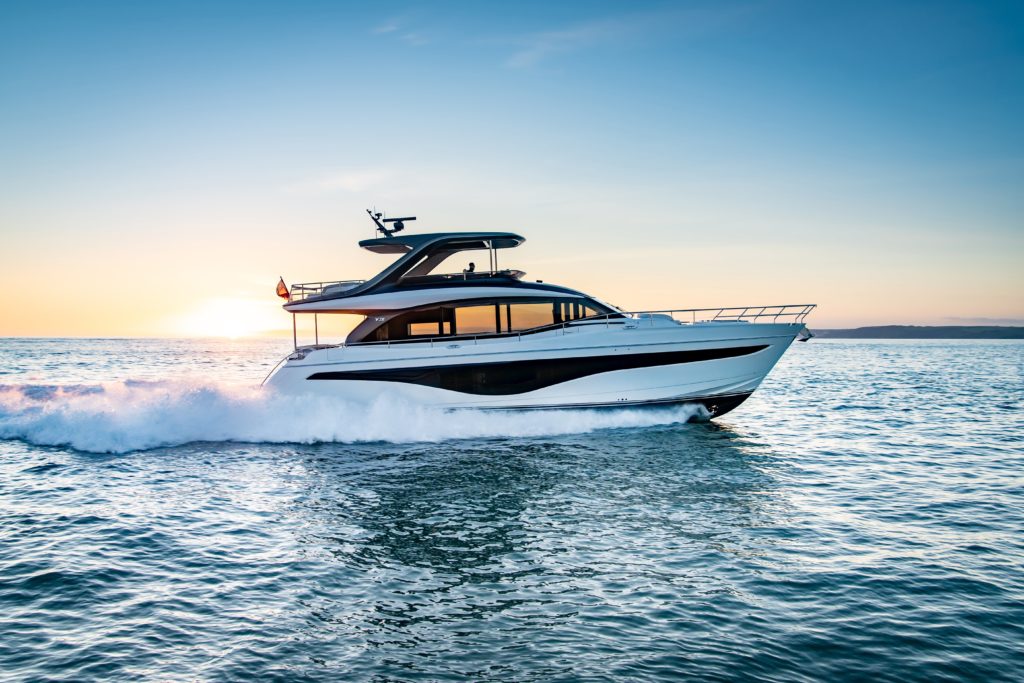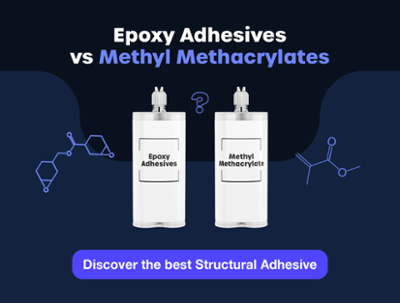
When choosing an impact-resistant structural adhesive, knowing where to start is never easy. But you’re halfway there if you already know you need an impact-resistant structural adhesive in the first place.
Here at Forgeway, we manufacture industrial adhesives. Manufacturers in the transportation industry often ask us for the best impact-resistant structural adhesive.
Whilst there is no definite answer, we can offer guidance on the best choice for you. Obviously, as industrial adhesive manufacturers, we supply a range of impact-resistant structural adhesives.
However, the purpose of this article isn’t to sell our own products. The aim is to educate you. We want you to be able to choose your own impact-resistant structural adhesive.
If you just want to know more about our products, you can click the button below to learn more about our range of impact-resistant structural adhesives here at Forgeway.
What is an impact-resistant structural adhesive?
Before we dive into the details, you should know the definition of an impact-resistant structural adhesive. To start with, a structural adhesive is an adhesive that is strong enough to become part of the structure to which it is bonded.
Typically, we would say any adhesive with a strength of more than 5Mpa would qualify as a structural adhesive. So, what about the impact-resistant part?
Simply put, it means the adhesive can deal with any impact. But what does this mean? This is where people argue about whether strength or flexibility is more important in an adhesive. The answer is; they are both as important as each other.
But an impact-resistant adhesive must have some element of flex, otherwise, it cannot deal with the stresses it will be exposed to. Any stress or impact the bond faces will not be transferred to the substrate causing bond failure. An impact-resistant adhesive will absorb any shock and stress from the impact.
So, in summary, an impact-resistant structural adhesive is a high-strength adhesive that has an appropriate level of flexibility.

Why do you need an impact-resistant structural adhesive?
If you don’t use an impact-resistant structural adhesive where required, the bond is much more likely to fail. Any type of bond failure is possible in this scenario. You will need an impact-resistant structural adhesive in any bond that requires high strength and flexibility.
But why?
The easiest way to explain this is with an example. So, if you are bonding metal to metal in a transportation application, you need a high-strength adhesive with some flexibility; an impact-resistant structural adhesive.

To put the example into a bit more detail, you are bonding the metal floor to a minibus chassis. You obviously need a high-strength adhesive for this application. But you must remember that the bond is going to experience a lot of movement (dynamic load).
Therefore, the adhesive you choose must have some flexibility too. But the terms ‘high-strength’ and ‘some flexibility’ are a bit vague. The impact-resistant structural adhesive for this application must be more than 15 Mpa and have an elongation-at-break score of more than 10%.
If you don’t have these characteristics in your adhesive choice, the bond is much more likely to fail. And bond failure in this application will pose a risk to life. Under adhesive bonding standards (like Din 6701), bonds that pose a risk to life must have that risk mitigated as much as possible.
In conclusion, if you don’t use an impact-resistant structural adhesive where required, the bond is much more likely to fail, potentially posing a risk to life.

What are the best impact-resistant structural adhesives?
So now you know why you might need an impact-resistant adhesive, it’s time to assess the different options you can buy. First of all, you need to assess what you are bonding. The substrates you are bonding will have a big impact on the adhesive you need to choose.
We’ve already touched on metal-to-metal bonding. But to reiterate, you will need an adhesive with a strength of more than 15 Mpa and 10% flexibility. A methyl methacrylate adhesive (like Purok VX 61) is the best impact-resistant structural adhesive for this application.
However, when it comes to other substrates like GRP (also known as fibreglass) the adhesive choice will be different. GRP isn’t as strong as metal and will break sooner than metal. Therefore, the adhesive needs to be more flexible than 10%.
An impact-resistant structural adhesive for GRP will need to have different characteristics. GRP will fail at 6 Mpa. So any adhesive that doesn’t start to flex before 6 Mpa will cause substrate failure. When bonding GRP in an application that will experience movement, you don’t need to worry so much about high strength. Flexibility is much more important from the adhesive here.
A high-strength MS polymer adhesive (like our Formoa 017 FE) is the best impact-resistant adhesive for this application. This is because a high-strength MS polymer adhesive will flex at around 2-3 Mpa and will have a strength of 4 Mpa making it a semi-structural adhesive.
So the best impact-resistant structural adhesive will depend on the substrates you are bonding. Metal and GRP are the two most common substrates used for structural bonding where you require impact resistance.

Choosing the best impact-resistant structural adhesive for you
As you know, choosing the right impact-resistant structural adhesive will depend on the substrates you are bonding. It’s now up to you to decide on the best adhesive for your application.
Here at Forgeway, we manufacture over 3000 tonnes of industrial adhesives every year. We know which adhesive types you should be looking at.
If you are bonding GRP or plastic, you will want to look at a lower-strength adhesives with more flexibility. MS polymer adhesives are the best choice for you as they have very high flexibility and enough strength.
If you are bonding metal to metal and you need impact resistance, you will need a very high-strength structural adhesive with some flex. Epoxies and methyl methacrylate adhesives are the two adhesive types you should be looking at.
If you don’t want to do much more research and you want to look at our impact-resistant structural adhesive, take a look at Purok VX 61.
However, if you want to do some more research, you can choose between a methyl methacrylate adhesive and an epoxy adhesive.
Thomas is the Content Manager here at Forgeway. Thomas' job is to translate the technical jargon from the ivory tower of academia into easy-to-read content that everyone can understand. Forgeway's mission is to answer every question our customers and prospective clients ask, or are apprehensive to ask.



